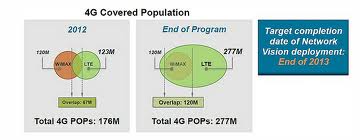
Today we feel so happy to see new mobile devices with so many features and services although we are not aware of the challenges that have been overcome in integrating these services to the multiple generations of the mobile network infrastructure. Long Term Evolution (LTE) forms the solution to all those challenges however it demands for a robust and a reliable network. LTE deployment requires network synchronization which makes synchronization techniques and parameters as the important factors to be considered. Synchronization ensures that the operation of the radios in the target LTE base station is within the defined parameters of 3rd Generation Partners Project (3GPP) standard, the International Telecommunication Standardization Sector (ITU-T) and the Institute of Electrical and Electronics Engineers (IEEE). Synchronization of network refers to the delivery of the specifically formatted clock signals in the circuitry of the base station radio that are further used to generate the phase components or the RF air interface frequency. In past, the network synchronization used to be circuit based that later changed to packet based ones with the advent of 3G, UMTS, HSPA and 4G LTE.
Different Synchronization Techniques
Although there are many synchronization techniques however the new and the most recognized techniques are synchronous Ethernet (SyncE) from ITU G.8262 and Precise Time Protocol 1588-2008 (PTP) from IEEE.
PTP: Precise Time Protocol is a mechanism used to transport value of time in the form of a time stamp from a grandmaster clock across the packet networks. It can deliver both frequency and phase signal (in form of pulse per second). It is considered to be the most effective way of radio synchronization for residential LTE base stations or for the LTE deployment.
SyncE: Although this cannot carry a phase component, it is a preferred technique for carrying a PRC (primary reference traceable clock) using the Ethernet PHY. This technique is similar to the way T1/E1 cables used to carry the traceable clock in the past. The PRC thus transferred is used for the radio synchronization in frequency division duplexed LTE (FDD) base station as it provides very accurate frequency with high stability and less wander.
Frequency division duplexing (FDD) and time division duplexing (TDD) are the two forms of full duplex technology that allow a two way communication in a network. Both of these communication technologies have their own benefits. FDD provides a high spectrum usage, has very little or no latency and has an unlimited range. It is widely used in GSM systems (recommended read: what is GSM module)however it cannot use the special antenna techniques such as MIMO (multiple input multiple output) and beamforming that form the core of LTE. On the other hand TDD transmits and receives using a single frequency band. TDD allows less spectrum usage with a shorter network range and an easy MIMO and beamforming. Although most wireless data transmissions use TDD, LTE and 4G systems use FDD due to the earlier technologies and prior frequency spectrum assignments.

What are Synchronization Modules?
The GPS technology is becoming a critical element with the rapid growth of precise timing. The GPS satellites contain many atomic clocks that provide very accurate timing data to the GPS signals. GPS is used by many investment banks and by many other industries to keep their network computers synchronized across the world and to maintain records and ensure their traceability. Although they are considered to be highly accurate, the major challenge with this technology is that in subways and in buildings the GPS receivers get no signals at all. Thus the GPS modules although very useful fail to fulfil our requirements at times. On the other hand, the WIMAX/WIBRO RAS RF wireless network system that is most visible in the down town and cities usually loose signals in the provinces. The WIMAX/WIBRO modules provide suitable bandwidth and range for portable mobile broadband connectivity, for wireless alternative to DSL (digital subscriber line) and cable, for data, telecommunications (VoIP) and IPTV services, for internet connectivity to the business continuity plans and for smart grids and metering.
The Precision Time Protocol provides very high network-sync accuracy for the network measurements and control systems. The IEEE 1588 standards although are good options for in building systems, their performance depends upon the network topology. Their working ability is based on the master-slave topology. The master antenna in the IEEE network must be locked when the satellite comes in view and should be close to the window. In this the slave does not require GPS. Whereas a GPS receiver can be locked only when the satellite comes in view and its maintenance is not available as it depends on the environment. The GPS receiver must be installed in a proven site with clear view. On the contrary, a WIMAX sync module requires a WIMAX system for installation.
Multiple Sync Module (MSM)









